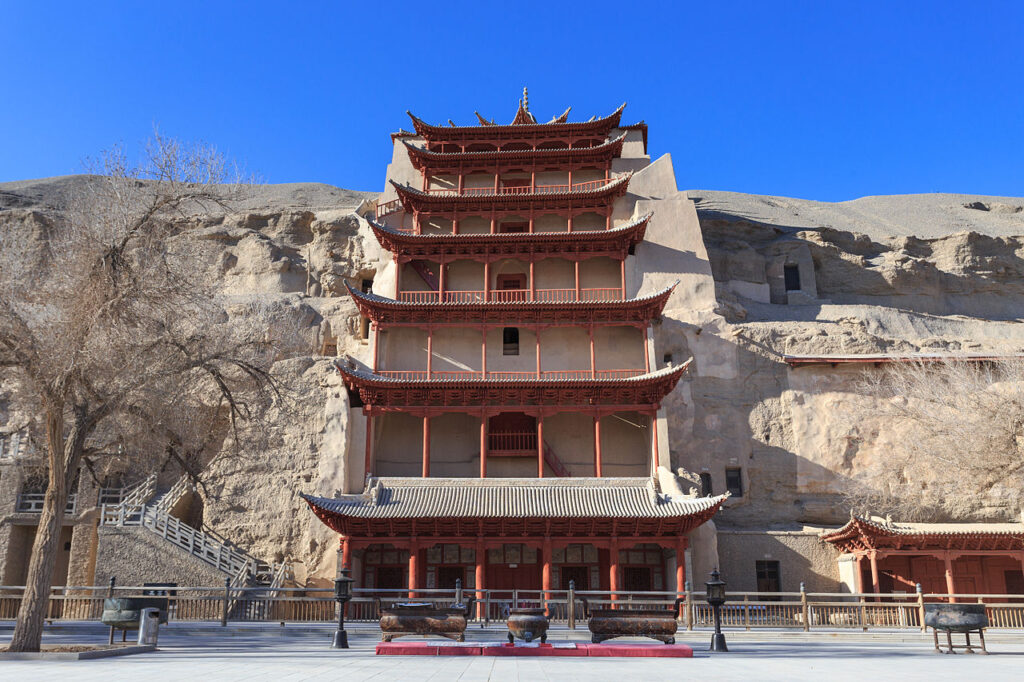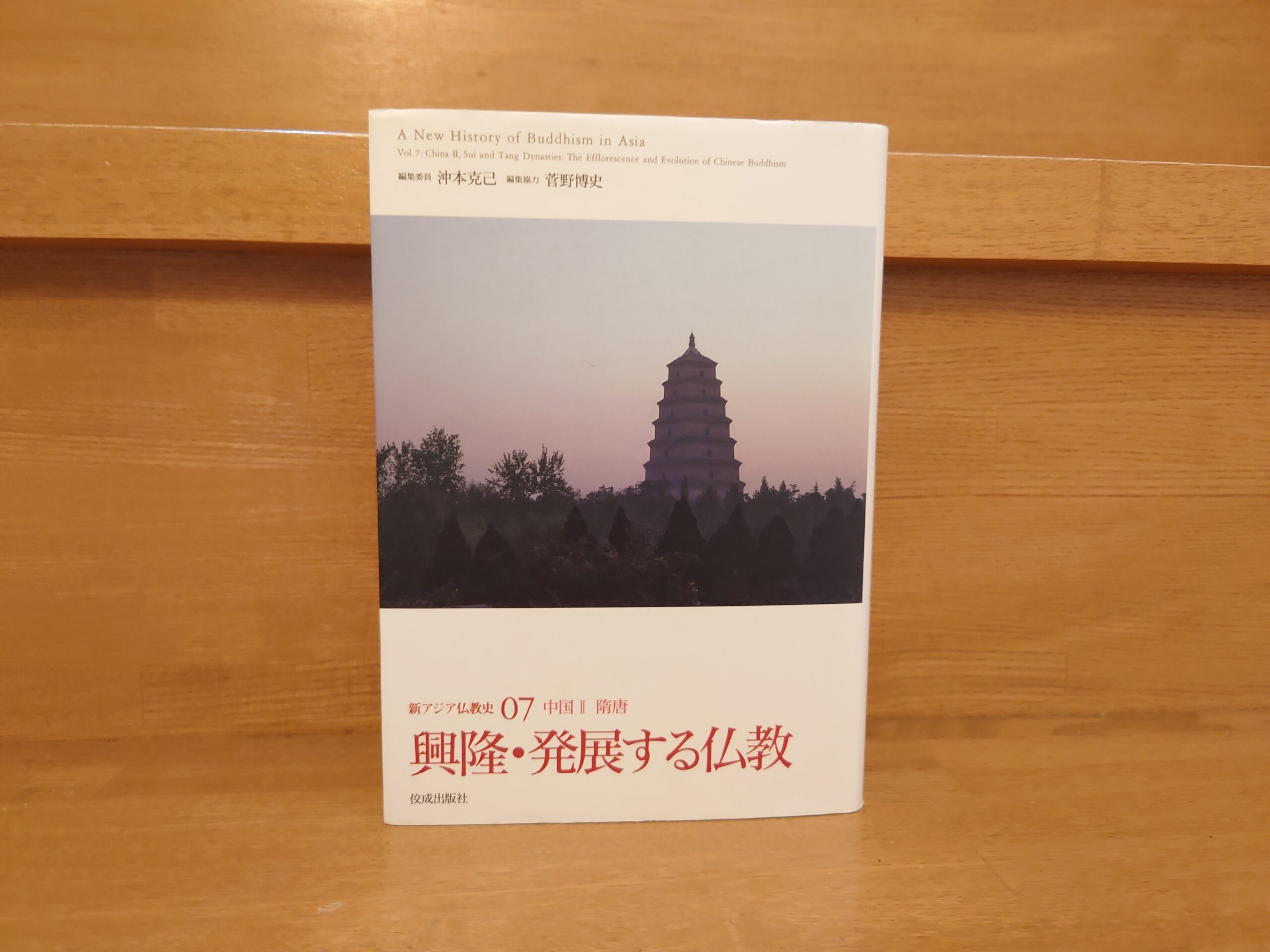Outline and Impressions of "New Asian Buddhist History 07: China II, Sui Dynasty and Tang Dynasty: The Rise and Development of Buddhism" - A recommended work to learn interesting facts about Daoism and Zhengyu.
This time we would like to introduce "Shin-Asia Bukkyo Shi 07 Chugoku II: Sui and Tang Dynasties, Rising and Developing Buddhism" edited by Katsumi Okimoto and Hiroshi Kanno, published by Kosei Shuppansha in 2010.
Let's take a quick look at the book.
The Sui and Tang dynasties in China were a turning point in which Indian Buddhism, introduced via the Silk Road, underwent a Chinese transformation and showed unprecedented development.
He also showed us what we know today as "sects" such as Zen, Pure Land, Tendai, Kegon, and Esoteric Buddhism.
Through the relationship between the emperor-centered unified state and Buddhism, China's unique doctrines, and the spread of the faith among the people, this exhibition reveals the rise of Buddhism as inscribed in the history of the great Chinese empire.Comments from the Publisher
Most of the Buddhist thought and culture that has spread throughout East Asia has its origins in Chinese Buddhism. The Sui and Tang dynasties, which were particularly spectacular in its history, were a time when Japanese envoys to China came and went, and prominent Buddhist monks such as Kukai and Saicho competed with each other to study in China. On the other hand, Buddhism was always in tension with state power in the huge empire led by the emperor. Some risked their lives on the streets to propagate Buddhism, while others hid deep in the mountains to pursue Zen training. The more one learns about Buddhism in the Sui and Tang dynasties, the more one can learn about Buddhism in East Asia, including Buddhism in Japan. The contents are designed to meet the needs of both those who are interested in Buddhism and those who are interested in world history. This book provides a clear picture of the spread of Buddhism in Japan and throughout East Asia. Chapter 1: What is Sui and Tang Buddhism [Chapter 2: The Chinese Transformation of Indian Buddhism [Chapter 3: Aspects of Teaching Buddhism [Chapter 4: The Genealogy of Popular Buddhism [Chapter 5: The Creation and Development of Zen Buddhism [Chapter 6: The Spread and Penetration of Esoteric Buddhism [Chapter 7: The Reception of Buddhism by the Shidayu
AmazonProducts Page.

In my previous article.A History of Buddhism in New Asia 06: China I, Northern and Southern Dynasties: The Eastern Propagation and Reception of Buddhism.In "New History of Buddhism in Asia 07: China II, Sui and Tang Dynasties: Rise and Development of Buddhism," we will look at the period when Buddhism took root in China and began to show its own development.
It is precisely because of the Chinese Buddhism of this period that Buddhism was introduced to Japan. In this sense, the content of this work can be said to be the base of Japanese Buddhism.
Also, as was the case with the previous work, this work emphasizes not only ideological and doctrinal aspects, but also the historical background, especially in relation to the state. In the "Introduction" of this book, it is stated as follows.
As for the composition of the book, it was possible to describe the history of specific themes, such as the history of sects, over a long span of time, but whether we like it or not, changes in dynasties and regimes will always be an important factor, since one of the characteristics of Chinese Buddhism was that it always developed while deeply involved with the state system. The ethos of each period was the same. We cannot ignore the fact that the ethos of each period casts a deep shadow over the cult and doctrine, as well as the people and their culture. Buddhist history is by no means limited to the history of doctrinal change.
Kosei Shuppansha, Katsumi Okimoto and Hiroshi Kanno (eds.), New Asian Buddhist History 07: China II, Sui and Tang Dynasties: The Rise and Development of Buddhism, p. 3.
Religion is not only religion. Religions change and are generated by the historical background, political economy, and all other factors of the time.
China has a particularly strong relationship with the state. What about Japan, on the other hand?
This book is a very good thought experiment on these matters.
And the most interesting part of this book was the part where the flow of Chinese Pure Land Buddhism was explained. I was particularly inspired by the stories about Dōng and Zendo, two high priests who are also revered as the Seven High Priests in Jōdo Shinshu.
It is not easy to learn about the lives and personalities of Dōnichō and Zendo, so I was just amazed at what this book has to say about them. The following is a brief description of these two men.
Rather than a scholarly monk, he is more of a leading monk (sermon preacher) or sutra reciter, who is required to have a beautiful voice, eloquence, talent, and erudition.
Kosei Shuppansha, Katsumi Okimoto and Hiroshi Kanno (eds.), New Asian Buddhist History 07: China II, Sui and Tang Dynasties: The Rise and Development of Buddhism, p. 220
As a Shin Buddhist monk, I had a strong image of the Seven High Priests as great high priests far away from home, but after reading this book, I was surprised at how close Zendo was to the people. I was surprised to read this book and see how close Dōng and Zendo were to the people.
I would highly recommend this to any Shin Buddhist monk. It is an extremely stimulating book.
The book also discusses the origins of various sects as well as Pure Land Buddhism, so those who are interested in each sect will surely find something to resonate with this book. This is a recommended reference book to learn about Chinese Buddhism, which has strong connections to our own Japanese Buddhism. We encourage you to pick up a copy.
This is "History of Buddhism in New Asia 07: China II: Sui Dynasty and Tang Dynasty, Rise and Development of Buddhism" - a recommended work to learn interesting facts about Daoism and Zen Buddhism.
Next Article.
Click here to read the previous article.
Related Articles





































